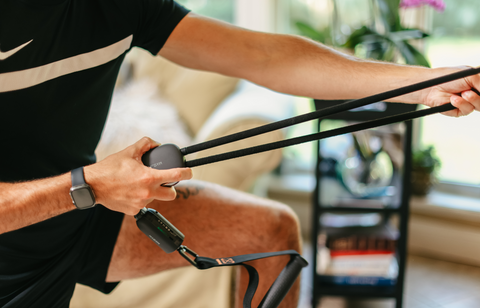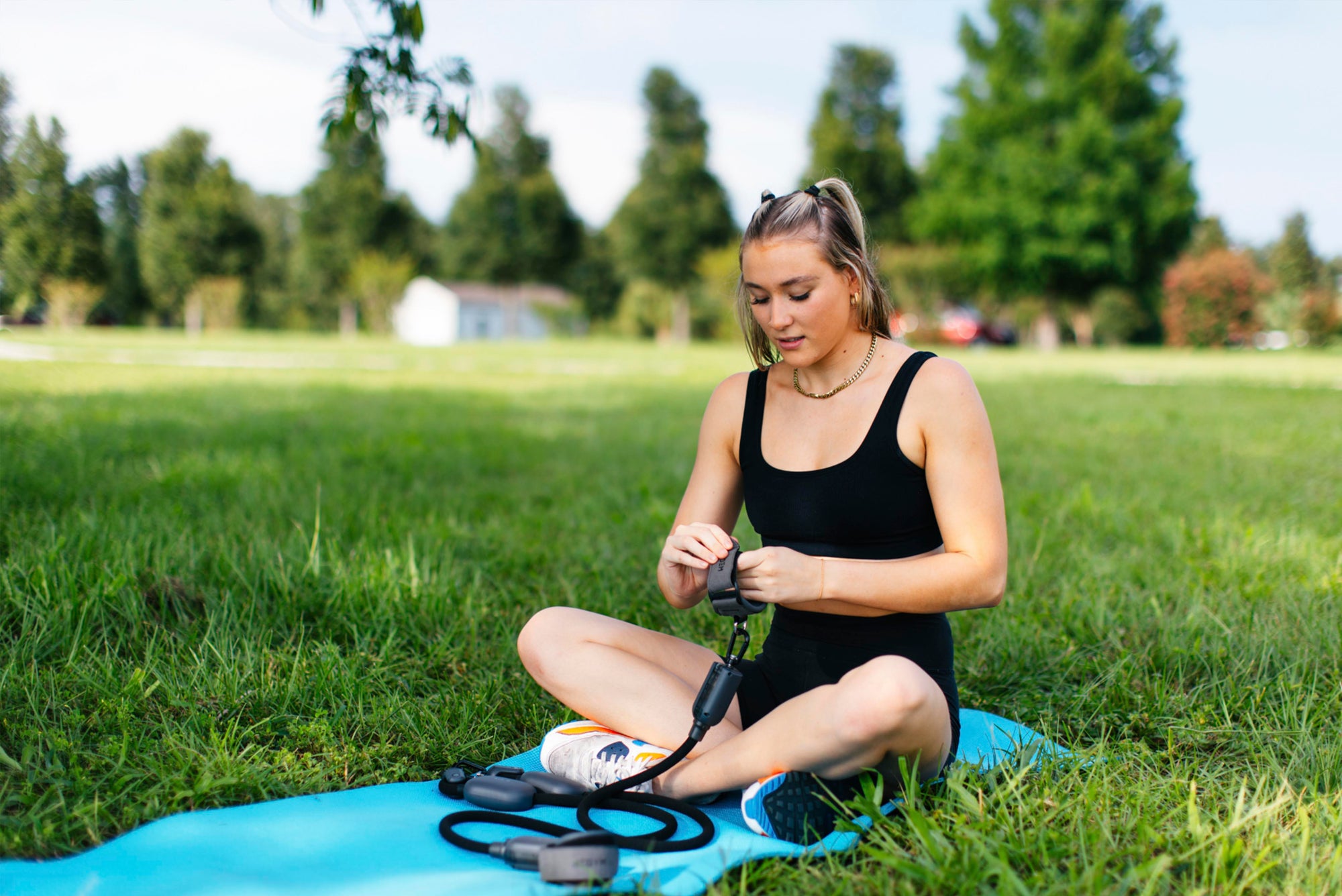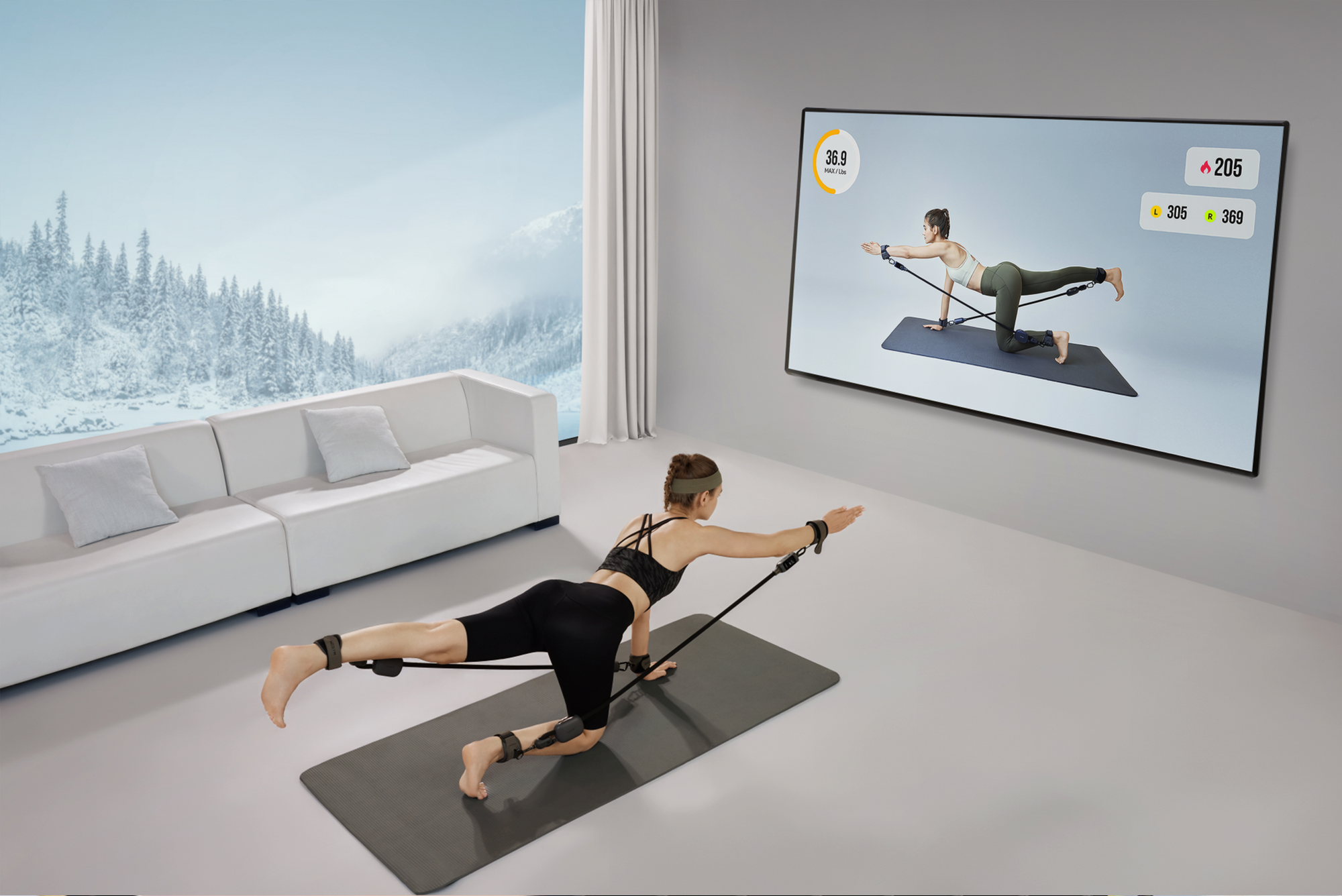Navigation
- What Are Resistance Bands?
- Benefits of Resistance Band Training for Mobility and Flexibility
- Resistance Band Exercises for the Upper Body
- Resistance Band Exercises for the Lower Body
- Resistance Band Stretches and Dynamic Stretching
- How to Choose the Right Resistance Band?
Resistance bands are now famous for improving flexibility and mobility. We can exercise to strengthen changing sporting types by resistance bands training. This article will introduce resistance bands and how to use them to exercise for full-body mobility and flexibility.
What Are Resistance Bands?
Resistance bands are flexible exercise bands used for groups, often used as an alternative to free weights.
As we know, about many types of resistance bands. There are many types of resistance bands, mainly in four categories, including:
- Tube bands: made of flat elastic tubing with handles on each end
- Power bands, also called Loop bands: a kind of circular bands with no handles
- Theraband: flat, continuous bands commonly used in physical therapy
- Mini bands: more miniature versions of power resistance bands.
Benefits of Resistance Band Training for Mobility and Flexibility
Resistance band training offers several advantages for improving mobility and flexibility:
- It provides variable resistance throughout the entire movement, challenging the muscles and joints to achieve a more excellent range of motion.
- Resistance bands allow for both assisted and resisted movements, enabling individuals to target specific areas for improvement.
- Resistance band training promotes functional movement patterns, mimicking real-life activities and enhancing overall body coordination.
Resistance Band Exercises for the Upper Body
Resistance Band Rows: This exercise targets the back muscles, promoting scapular retraction and shoulder stability. Individuals secure the resistance band to a stable anchor and pull the bar toward their chest, maintaining proper posture throughout the movement.

The back muscles can traditionally be divided into two parts: superficial muscles: the rhomboids, the latissimus dorsi, and the scapular raphe and rhomboids deep muscles: mainly the erector spinae, also known as the sacral muscles and the pinch muscles.
For zonal training, only the superficial muscles are introduced: superficial muscles of the back: the latissimus dorsi, located in the outer part of the back and the superficial part of the lumbar region, is a wide flat muscle that plays a vital role in the overall width of the back!
Other small muscles located in the upper and outer part of the back: large circular muscle, small circular muscle, rhomboid, infraspinatus, etc.
Influence the separation of the back! The rhomboids, located in the upper part of the back and superficially in the middle, are divided into three parts: upper, middle, and lower, and play an important role in the thickness of the back! The erector spine, also known as the sacrospinalis, is located in the lumbar region; strengthening the erector spinae can greatly benefit training and strengthening lumbar stability!
We use tension bands to work mainly on the upper and middle back and lateral muscle groups.
Resistance Band Shoulder Press: This exercise strengthens the shoulder muscles and improves overhead mobility. Individuals hold the resistance band at shoulder level and press it upward, extending their arms fully while maintaining control and stability.
Resistance Band Exercises for the Lower Body
Resistance Band Squats: This exercise targets the lower body muscles, including the quadriceps, hamstrings, and glutes. Individuals place the resistance band above their knees and perform squats while maintaining proper form and alignment.

Resistance Band Hip Abductions: This exercise focuses on the hip muscles, particularly the glutes and outer thighs. Individuals attach the resistance band around their ankles and perform side leg lifts, engaging the targeted muscles throughout the movement.
Resistance Band Stretches and Dynamic Stretching
Resistance Band Hamstring Stretch: You should fix the resistance band on your foot or lie on the back and lightly pull the band to stretch.
Dynamic Stretching with Resistance Bands: You should match resistance bands into dynamic movements, using the band which provides for resistance to do leg swings, arm circles, and torso twists.

How to Choose the Right Resistance Band?
There are several types of resistance bands available, including:
- Rubber bands: This is the most common type of resistance band made of rubber.
- Loop bands: The bands are rubber for exercise low-body like squats or lunges. All of these use color for resistance level.
- Tube bands: These bands are made of rubber on two sides, which provides more resistance than loop bands into rows and bicep curls.
- Thera-band: The bands are made of latex and used for physical therapy and rehabilitation. They have different colors whose an extra level.
Every type of resistance band has its advantages and disadvantages. Rubber and loop bands are lightweight and easy to carry, making them a good option for frequent travellers.
You should think about your goal and special exercises when choosing a resistance band. You can choose a higher resistance level band if you want to exercise your muscle and power. If you want to recover from some injuries, you can choose a lower resistance level.
In a word, using resistance badges is a great way to strength train at home. They are different types: rubber, loop, tube, and therapy bands. Each type has advantages and disadvantages, depending on your fitness goal and situation.

The rule of pounds is a straightforward rule of pounds for choosing an elastic band:
When choosing the right resistance band, select one with an appropriate amount of tension to match your strength level and training goals. As a general guideline:
- Women new to fitness should start with a 15 lb band.
- Women with some fitness experience can begin with a 25 lb band.
- Men new to fitness or women with higher muscle strength can start with a 35 lb band.
- Men who are fitness professionals may want a 55 lb band.
For working smaller muscle groups like shoulders, arms, neck and wrists, opt for a band around half the weight you'd use for larger muscle groups. For example, if a 25 lb band is ideal for leg exercises, choose a 12-15 lb band for bicep curls. Experiment to find the optimal resistance band tension for each exercise. Increase the band weight as you get stronger.
Resistance band training is the most valuable way to improve the whole body's mobility and flexibility. We should do more exercises and resistance bands and learn more about them while keeping the rule of resistance band exercises in mind. Everyone has the opportunity to improve their motion, joint stability, and all physical by training in resistance band exercises. And the versatility and effectiveness of resistance bands are an excellent way for individuals to fitness. But it is crucial to use proper form and gradually progress the resistance and intensity of the exercises. , But it is important to use the right way to gradually improve the power of the activities.



